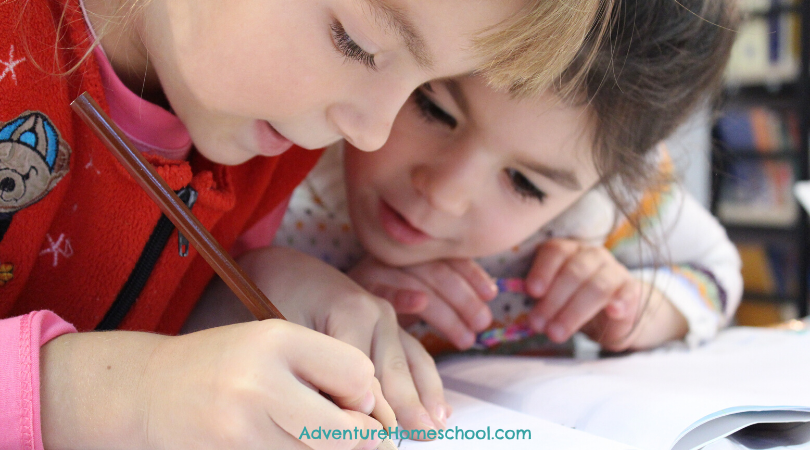
The Nature Homeschool is extremely compatible with the Kinesthetic Learning Style in your homeschool. Kinesthetic learning is active learning, hands on learning. It works well for all kids, but especially for those with dyslexia or who simply learn best this way.
Getting students outdoors to explore God’s creation, gets them excited about learning and is the perfect backdrop for tactile, kinesthetic and dyslexic learners. As a matter of fact, it’s a wonderful backdrop for all learners.
Nature Homeschool Walks
From the beginning of our family homeschool, nature walks have played an important role in the education of our children. It is an easy and engaging kinesthetic learning style technique if you apply a few interesting learning strategies. I’m so glad we learned early on to incorporate this style of learning! It makes for some terrific communication and conversations with my boys! We walk, we listen and look at the flora and fauna all around us. I’m amazed at the impact it has had on their education.
I used to be the teacher . . . these days as we walk and explore – they are often telling me what type of bird or bug we are looking at! They have become inspired by this style of learning . . . to investigate further, read and research more about the animals and habitats we come across. Best of all, they have learned to recognize the fingerprints of the Creator on His masterpiece!

Kinesthetic Learning Style Tools
We find these nature walks and tools to be extremely beneficial to our dyslexic learner, and all our boys! They are all different, yet this hands on learning style works well for each of them. Some of the tools we use to enhance learning (and have put together in our exciting adventure packs) are listed below.
- Backpack
- Binoculars
- Journal
- Sketchbook
- Magnifying glass
- Bug viewer
- Measuring tape
On one of our nature walks, we spotted and observed a stone crab, kestrel, robins, blue jays, fish, wild coffee, caterpillar, cicada, garden pineapple, and an alligator. Although, your nature walk doesn’t need to provide quite such diverse options, it was a fruitful nature walk! While alligator sightings may seem more exciting, it can be just as interesting to take a close up look at pretty weeds to discover the tiny insects hiding there.
The boys used their magnifying glasses to take close looks at those they were able. They used their binoculars to spot the kestrel and look closely at the robins. The boys measured the width of several different trees and compared the bark and leaves in their nature journals. They sketched pictures and entered scientific data and we will continue the study by looking up additional information on the flora and fauna we saw.
These are some of the favorite tools which have allowed us to take a deeper look into nature. Our boys are learning to recognize the fingerprints of their Creator, and to learn more about Him and the world around them by the careful study of His design.
FREEBIE
For best results, print on cardstock, cut out cards, place on ring.
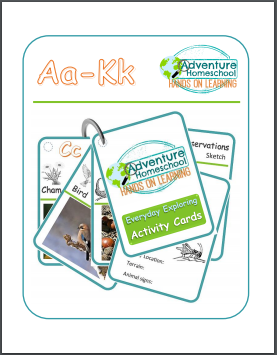
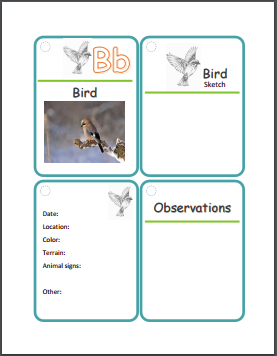
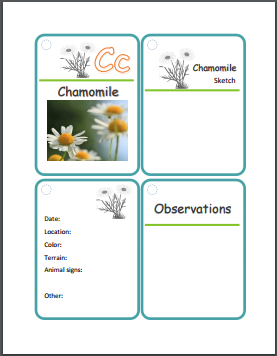
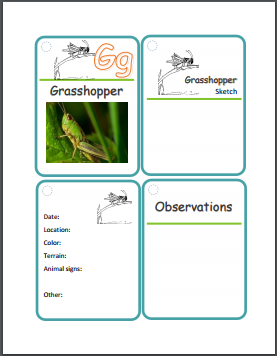
Enter your email for our newsletter and go immediately to the download page to print these Nature Activity Cards to use on your homeschool nature walks.
Interested in our Adventure Packs?
They come with 12 weeks (or months) of unit studies, a seashell kit, a fossil and sharks teeth kit, and an owl pellet kit for terrific hands on nature homeschool!





